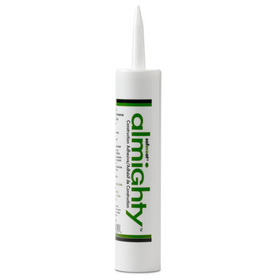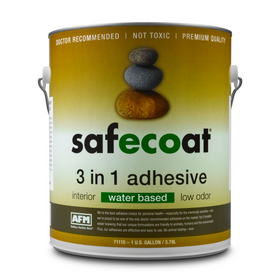
Sustainability vs. Resilience - The RELi Building Standard
Last Updated: Feb 23, 2025LEED, WELL, Net Zero, Passive House, Green Globes, Green Star...does the world need another building rating system? Several leaders in the green building industry think so—namely, Doug Pierce of Perkins + Will, a pioneer in green building and resilient design. So what’s this all about?
The RELi building standard was born in 2012-13 out of the need for our buildings and neighborhoods to address sustainability and resiliency.
Resiliency vs. Sustainability
The difference? Sustainability can be viewed as the status quo: we need to allow the Earth to keep being able to provide clean air, clean water, and food to all species living on Earth—now and for future generations. According to RELi literature, this idea of sustainability is currently at risk for three big reasons: climate change, decrease in biodiversity, and social instability.
The idea of resiliency is to recognize that some of these risks have already arrived, so we need to both mitigate and adapt—we need to be able to return to a stable state (sustainability) following a disruption. That disruption can be related to natural disasters such as tsunamis, tornadoes, and flooding, or it can be connected to human-created disasters, such as chemical spills, terrorist attacks, or economic disruptions. If we can recover and return to sustainability, we have reached something even better: the ability to regenerate—part of a whole process.
Table of Contents
- What is the RELi Standard?
- Top 2 Take-Aways
- The Time is Now

One example Mr. Pierce uses is that of renewable energy. A sustainable version of renewable energy is a grid-tied solar photovoltaic system that mitigates carbon emissions (because we are replacing the burning of fossil fuels with clean energy from the sun). A resilient version of renewable energy could be a solar photovoltaic system connected to the grid, other micro-grids, and a backup storage battery—so that if the grid goes down, the building can still rely on renewable energy. A regenerative system would be one that annually provides more solar power to the grid than used by the facility (as Hanson’s house does).
What is the RELi Standard?
According to its website, “RELi <pronounced rely> combines a holistic list of resilient design criteria with the latest in the integrative design process for developing next-generation neighborhoods, buildings, homes, and infrastructure.” (You can hear more about it on this Buildings.com Podcast with Doug Pierce.)
Like the LEED® rating system in terms of prerequisites and credits, RELi is a point-based framework with a credit catalog of a whopping 190 line items. It addresses much of what LEED addresses, but with an added emphasis on resiliency, through the following eight credit categories (this summary is not all-inclusive, but an attempt to translate this vast topic into something relatable):
1. Panoramic Approach
This category focuses on planning and designing, addressing the entire process of how designers, engineers, and project team members work together. It is perhaps the most important for larger projects so that every team member understands the shared vision and goals.
2. Hazard Preparedness
This is basic emergency preparedness: after any type of crisis, weather-related or not, people need to be able to remain in a shelter, have food reserves, access to drinking water, sanitation, first aid, etc., as well as the ability to communicate among each other and with other communities. So, old technologies like a landline, CB or HAM radio, and walkie-talkies are fundamental to emergency preparedness.
3. Hazard Adaptation
This addresses the physical capabilities of the facilities, such as backup power, access to water, and thermal safety.
4. Community Vitality
The largest category addresses social cohesion, addressing the need for tool sharing, harvest kitchens and gardens, community radio and newsletters, meeting places, and other public amenities.
5. Productivity / Health + Diversity
Most similar to LEED’s Indoor Environmental Quality, this category looks at healthy indoor air (fresh air, low-emitting materials, ventilation, filtration, tobacco smoke control) and access to daylight and views. It also includes credits LEED does not address, like a functional design for buildings and communities—i.e., access to open stairs, walking routes, outdoor exercise, etc., so that living or working in the building can enhance, as opposed to hinder, occupants’ health.
6. Energy / Water + Food
This category focuses on energy efficiency and water efficiency. Still, it goes much further into planning for alternative ways to obtain water and energy, in the event access is unavailable due to some extreme weather event or other disasters. So, for example, a project can earn points for planning for rainwater collection, as well as planning for space to harvest wind and solar energy. It also pushes the goals further for buildings to attain Net Zero energy and net positive water.
It focuses on food production (in a way that LEED never has): does the building, site, community, or neighborhood have a way of producing food on-site? The credits range from edible landscaping to on-site vegetable production and aquaponics.
7. Materials + Artifacts
The two primary components of this category are planning for storage and collection of recyclables and construction waste diversion. These are both similar to the more familiar LEED Materials & Resources credit category. But RELi goes further, requiring projects to develop a plan that uses “materials, products, or components that are socially, ecologically and environmentally responsible.”What does that mean? It’s a reasonably broad definition (and we won’t go into all of the details), but product attributes that fit this definition can include products that are manufactured with supply chains that are socially and ecologically responsible; contain significant post-consumer recycled content; contain locally extracted, harvested, or recovered materials; are already on-site and can be salvaged or repurposed; and are designed with its life cycle in mind and can, therefore, be composted, recycled, or adapted and reused.
8. Applied Creativity
This last category is a catchall to encourage and reward innovative thought around “resilient economics, equity, education, and ecology indicators.”It also recognizes that one rating system, written at one time, might miss some issues specific to the region—so a project can earn additional points for coming up with more creative, contextual resilient responses.
Top 2 Take-Aways
You may be thinking, that’s great, but what does it mean for homeowners and homebuilders? While the RELi standard could be applied to homes, the truth is, most homeowners and home builders are not up to the task of diving through 190 line items and figuring out what to do. But there is great information to glean from the holistic approach to designing for resiliency. The two top takeaways for homeowners relating to resiliency are:
1. The Value of an Up-Front Risk Assessment
It’s essential to take the time to understand your location and assess if your home is subject to water damage, hail damage, tornadoes, floods, termites, etc. This up-front planning can make your home last longer.
2. Planning for Emergencies
Once you recognize the things you depend on for survival—food, clean water, clean air, shelter, and thermal comfort- you can look at what you would do if any of these things were not available to you in the usual way to some major disaster. So, planning for backup power is essential. Other important considerations: Do you have food reserves? Do you have a family communication plan? Where will you get your water? It’s a good idea to think of these ahead of time, so you’ll be better prepared. The American Red Cross offers more information on How to Prepare for Emergencies.
The Time is Now
The call for resilient design is pressing; its mission statement says it best:
The current need for resiliency is urgent. To sustain a safe and vibrant quality of life, we must respond holistically to the weather extremes, economic disruption, and resource depletion that are now becoming commonplace. Our societal and planetary well-being depends on the cooperative interaction of all elements in our lives: social, economic, and environmental. By coupling a comprehensive living design Credit Catalog with the integrative design process, RELi lays the groundwork for advanced and even revolutionary resilient, regenerative and healthy outcomes that support the whole of life.
The goal of RELi is aspirational, one filled with hope that we, as humans, can survive—and even thrive—but we need to broaden our understanding of the design and shift our paradigm of how we live. “Resilient Design pursues Buildings and Communities that are shock resistant, healthy, adaptable and regenerative through a combination of diversity, foresight and the capacity for self-organization and learning.” Who could argue with that?
Melissa Rappaport Schifman
Melissa became the Twin Cities’ fifth LEED for Homes Accredited Professional (LEED AP) and completed the work necessary to get her own home LEED Gold Certified, the basis for her book, Building a Sustainable Home: Practical Green Design Choices for Your Health, Wealth, and Soul, (Skyhorse Publishing, August, 2018). With her corporate experience in finance, marketing, and business development, and an MBA and Master’s in Public Policy from the University of Chicago, Melissa has been providing sustainability advisory services to businesses, governmental agencies and non-profits, focusing on strategic and operational change that provide bottom-line financial returns. She has led the LEED certification of two million square feet of commercial buildings, written GRI-compliant Corporate Sustainability Reports, is a LEED Pro Reviewer and LEED mentor with the U.S. Green Building Council. She is the founder of Green Intention LLC where she writes about sustainable home living.










